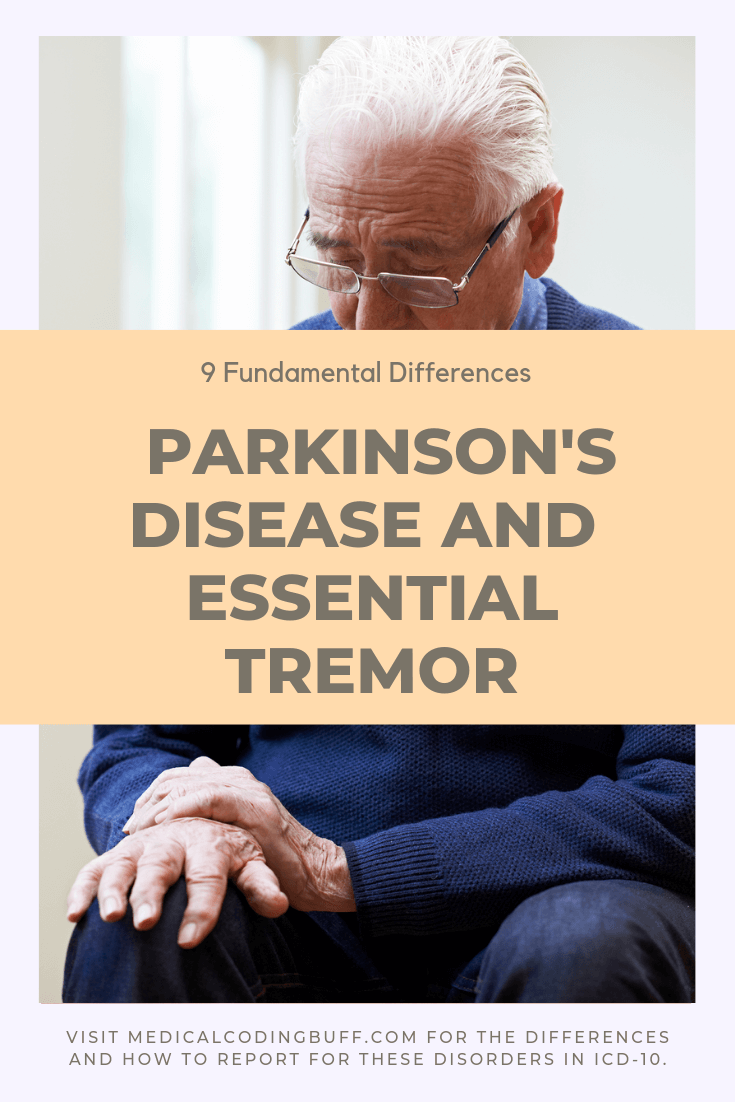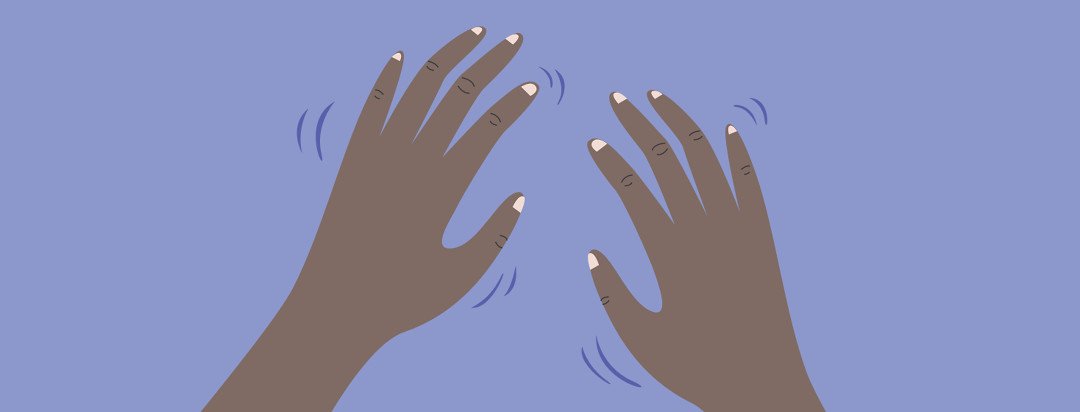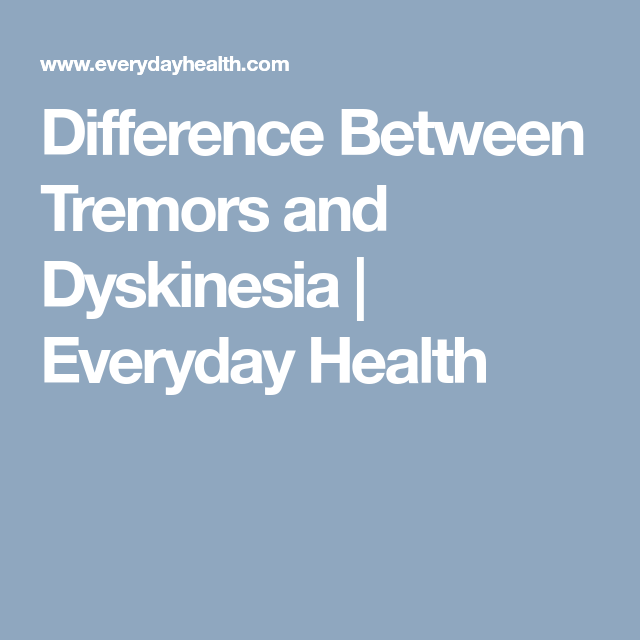How To Tell The Difference
While a primary care physician or internist may be the first doctor to see a patient with tremors, he or she is generally not the most qualified person to issue a diagnosis. Instead, a referral is made to a specialist called a neurologist who is trained and experienced in movement disorders. Since there are many things that can cause uncontrollable shakiness, the neurologists initial concern is ruling out a disease, especially PD. Since there are no lab tests that can confirm the diagnosis, the initial consultation usually consists of the following:
- Personal medical history, including any past or current medications
- Family history
- Observation of physical symptoms, e.g. tremor, facial expression, walking, balance
- Testing reflexes, motor coordination, and muscle rigidity
- Writing tasks (handwriting sample, tracing a spiral shape
- Also ruling out PD based on pre-symptom experience, e.g. loss of sense of smell within the previous 10 years is a tell-tale sign of PD though it doesnt occur in every patient)
Next Steps: Getting Care For Parkinsons And Essential Tremor
If you believe you have Parkinsons disease or essential tremor, dont hesitate to seek professional care. Your doctor can help you diagnose your condition, find the right treatment plan for you, and manage your symptoms so you can enjoy the best quality of life possible. While suffering from a condition like essential tremor or Parkinsons can be frightening, you dont have to face it on your own.
How Are Tremors And Dyskinesia Treated
We treat these two kinds of movements very differently, says Herrington. Dyskinesias are usually a problem of too much dopamine medication , and tremors are sometimes a problem of not quite enough.
Its therefore important for a neurologist to be able to tell the difference between the two symptoms, he says, and to adjust the medications accordingly.
Herrington points out that not all people are similarly bothered by tremors or dyskinesia. Take tremors, for example. There are some people who have a very small tremor and it bothers them immensely, he says. Other people have quite a substantial tremor and really dont seem to care about it very much.
When it comes to treating Parkinsons-related tremors, doctors may start out by asking people how much the symptom bothers them. As a physician, you can categorize which symptoms people have or the level of severity, says Herrington, but its always really important to ask the person what bothers them. The most objectively severe symptom may not be the one that bothers them the most.
As for dyskinesia, some people dont notice it at all, he says. there is often a divergence between how much they notice and are bothered by it and how much their loved ones notice and are bothered by it.
Recommended Reading: Music Therapy For Parkinson’s
Is Head Tremor The Same As Essential Tremor
Head tremor is often described as an oscillation of the head, causing it to move side to side or up and down. The tremor can be rhythmic like a pendulum or irregular and more pronounced. While head tremors can be one of many types of tremors experienced by those with essential tremor, they are also seen in patients with dystonia.
How Can People Manage Parkinsons

When it comes to managing dyskinesia and tremors, its important to strike a balance between too much medication and too little. You can have too much dopamine medication , which can make dyskinesias occur earlier and can make them worse once they start, says Herrington. Then theres the effect of not enough dopamine medication, which can leave people with this off, slow, stiff feeling.
The person and the caregiver and loved ones need to be aware of the necessary trade-offs that are involved, he continues. Only then can you make an informed decision on how best to move forward.
The more people know about the treatment options for Parkinsons, the better off they tend to feel. There may be a situation where a patient feels very uncomfortable in the off state but the spouse is bothered by dyskinesias, Herrington says. I share with that we cant necessarily find the perfect dose that gives your partner relief from the slow, stiff, off symptoms and causes no dyskinesias. For some patients, finding that middle ground is very difficult.
Recommended Reading: 1st Sign Of Parkinson’s
Does Essential Tremor Get Worse Over Time
Typically, ET symptoms gradually worsen over time. While most people with ET only experience mild to moderate symptoms as they age, others may experience substantial disability. As it progresses, tremor frequency may decrease however, tremor amplitude may increase, which can cause challenges with fine, discrete motor skills such as writing or eating. With treatment, symptoms can be managed.
Signs & Symptoms: Is It Essential Tremor Or Parkinsons
In order to start managing your condition and receive the treatment you need, you should be aware of the most common signs and symptoms as well as the key differences between essential tremor and Parkinsons. After all, the first step in getting care as early on as possible is self-awareness that you might be suffering from one of these conditions.
Also Check: Best Walking Cane For Parkinson’s
Misperception #: The Tremor Of Et Is Bilateral & Symmetric
Action tremor in patients with ET is usually, though not always, bilateral, and it is typically asymmetric . In a community-based study of 54 patients with ET, the use of clinical rating scales revealed on average a 1.32-fold sideside difference, and quantitative computerized tremor analysis revealed on average a 1.71-fold sideside difference in arm tremor severity . Unilateral arm tremor is less common, reportedly occurring in 2, 4.4 and 10% of ET cases, with values varying depending on the criteria used . One study evaluated unilateral arm tremor in 412 ET cases from 133 kindreds with presumed autosomal dominant ET . Inclusion criteria required unilateral kinetic or postural tremor for at least 5 years, without dystonic posturing or bradykinesia/rigidity . Only subjects with a first-degree relative with definite ET were included . Eighteen patients were identified as having isolated unilateral arm tremor without tremor affecting other body segments . Out of the 18 patients, 13 had a combination of postural and kinetic tremor and 5/18 had only unilateral postural tremor . Isolated unilateral postural tremor should raise the suspicion of PD, and the patient should be followed closely for the development of additional signs suggestive of PD.
Clinical pearl #3: Action tremor in ET is often but not necessarily bilateral. Small to moderate sideside differences are the rule rather than the exception.
Clinical Situation #: Pd Or Pd+et
Clinical summary
A 65-year-old man with rest tremor and rigidity in the right arm is diagnosed with PD. Five years later, he develops a postural tremor of his right arm, which occurs after a latency of 10 s and a frequency similar to his 4-Hz rest tremor.
A re-emergent tremor with similar frequency to the patients rest tremor is consistent with a diagnosis of PD. There are no additional features to suggest ET.
Also Check: Microbiome Diet For Parkinson’s Disease
Is It Parkinsons Or Essential Tremor
As we go on through life, a lot of incurable diseases and disorders emerge while we move on and try to adapt to change. Sometimes it feels as if theres no escape from these dilemmas and as if technology is the reason for these crises. Well, thats not true because the human species doesn’t stand aside and do nothing. On the contrary, we take a stand and use technology to help us find cures and results for every obstacle we face.
It wont be easy but its not impossible!As time passes, we find ourselves facing a huge obstacle in illnesses. We have come across multiple disorders like Parkinsons disease and essential tremor that have put us in quite a bubble. Conditions like these havent proven yet for a cure nor have they been analyzed for causes as well. But how can we tell disorders like these apart?First, lets take a quick look at both of these conditions and what they are.
References:
What Is The Difference Between Essential Tremor Andparkinson’s
The exact cause of essential tremor is unknown while Parkinson’sdisease is better understood.
In Parkinson’s disease, neurons located in the part of the brain thatcontrols movement become impaired or die. These neurons usually produce achemical called dopamine which enables regular body movements. When the neuronscan’t produce necessary levels of dopamine, tremors can occur, along withrigidity of limbs and decreased coordination.
Also Check: Is Drooling A Sign Of Parkinson’s Disease
Clinical Situation #: Et+pd Or Just Pd
Clinical summary
A 60-year-old man develops a mild, right-greater-than-left postural arm tremor and an even milder right arm kinetic tremor. The postural tremor involves a pronation-supination movement of the forearm and also involves the fingers. Five years later, the patient develops right-sided rest tremor, rigidity and bradykinesia.
This patient eventually meets the criteria for a clinical diagnosis of PD. The initial action tremor was postural greater than kinetic and involved pronation-supination at the wrist, which is more characteristic of the postural tremor in PD than ET. That tremor was likely an early manifestation of PD rather than ET. Hence, the diagnosis all along was likely to have been just PD.
What Is Parkinsonian Tremor

Like dyskinesia, a parkinsonian tremor involves involuntary muscle movements. Unlike dyskinesia, however, a tremor is characterized by regular, rhythmic movements.
A tremor can affect one or more parts of the body, with the most common being a persons hands. In the early stages of Parkinsons, tremor is typically seen on one side of the body often starting in a hand however, as Parkinsons progresses, tremor may impact both sides and affect more body regions.
Typically, Parkinsons tremors, often referred to as a rest tremor, occur when the person is at rest or under emotional or physical stress. During sleep and other relaxed states, and when the affected part of the body is actively moving, tremors often subside.
Regardless of the body parts they affect, tremors can interfere with routine activities such as writing, shaving, getting dressed, tying shoelaces, cutting, and other tasks that require fine motor coordination.
Also Check: Parkinson’s Disease Stage 1 Symptoms
What Is The Difference Between Essential Tremor And Parkinsons Disease
Essential tremor is a neurological disease with autosomal dominant inheritance, which is characterized by the development of bilateral, low amplitude tremor prominently seen in the upper limbs. On the other hand, Parkinsons disease is a movement disorder characterized by a decline in the dopamine level of the brain.
Furthermore, essential tremors can affect patients of any age, but the peak incidence is in the early decades of life. However, Parkinsons usually occurs in the elderly people. Moreover, essential tremors have an autosomal dominant trait while Parkinsons disease is not known to have a genetic trait. The below infographic presents more details on the difference between essential tremors and Parkinsons disease.
Who Is Affected By Tremor
About 70% of people with Parkinsons experience a tremor at some point in the disease. Tremor appears to be slightly less common in younger people with PD, though it is still one of the most troublesome symptoms. People with resting tremor usually have a more slowly progressing course of illness than people without tremor.
Also Check: Nursing Management Of Parkinson’s Disease
What Side Of The Body Is Affected By Tremors
Parkinson’s-related tremor is well-known to typically initially manifest itself on only one side of the body. It will often go on to affect both sides only later on, as the disease enters its later stages, but one side of the body will still remain disproportionally prone to tremor. People with Essential Tremor, on the other hand, tend to have “symmetrical” or “bilateral” tremors from the very start.
Treatments For Essential Tremor
According to Harvard.edu, there are several actions that can be taken to help manage your essential tremor and minimize how they impact your daily life. First, lets cover treatment options:
As each patient is different, you and your doctor will need to decide what the best course of action is for you. You must weigh the pros and cons of each treatment option based on your lifestyle and how you think theyll impact your quality of life.
Also Check: Prayers For Parkinson’s Disease
Are There Ways To Treat Essential Tremor Without Medications
Some patients may benefit from the Liftware device, which helps patients to eat with less spillage. This device comes with a stabilizing handle and a utensil attachment and works by stabilizing the utensil so that less food is spilled. Stress management and physical therapy are helpful for those with mild to moderate ET, but are typically used in combination with medications and/or surgery. For those with symptoms not controlled satisfactorily by medications, deep brain stimulation or thalamotomy can be helpful in improving symptoms and may even help to reduce the amount of medications needed to improve symptoms. Your neurologist will be able to help you determine options that are right for you.
What Is Dyskinesia In Parkinsons Disease
Dyskinesia is predominately a side effect of a medication called levodopa thats used to treat Parkinsons disease.
To the trained eye, dyskinesias look quite different , says Herrington. Dyskinesias are not rhythmic they have a more writhing quality.
Herrington points out that you can see an example of dyskinesia if you look at videos of Michael J. Fox. Usually, he says, when is on camera, he has some dyskinesia, or extra movements that are involuntary.
Read Also: Movie Stars With Parkinson’s Disease
Essential Tremor Vs Parkinson’s Tremors: A Guide To The Major Differences
When people think of Parkinson’sdisease, they may picture the shaking hands commonly associated with thecondition. Persistent shaking of hands and limbsalso known as tremorcan makeit difficult to write a grocery list, hold a cup of tea, button a shirt andapply makeup, among other routine tasks. When tremors interfere with dailylife, it can be very disruptive. While tremors are a hallmark of Parkinson’spatients, there are other diseases similar to Parkinson’s that can causetremors.
Causes: Parkinsons Vs Essential Tremor

The cause is largely unknown for both Parkinsons and essential tremor. However, there are theories about what may cause these conditions.
In regards to essential tremor, John Hopkins Medicine notes that there is a theory that the condition may be caused by miscommunication between the cerebellum and other parts of the brain. There is also believed to be a genetic predisposition for developing essential tremor. You may be 50% more likely to develop essential tremor if your parent has the condition.
It is also important to note that certain factors can also cause other types of tremors. For example, according to the National Institute of Neurological Disorders and Stroke, certain medications, thyroid overactivity, and toxins like lead and mercury can produce tremors that might be confused with this condition.
In regards to what causes Parkinsons disease, the direct cause as to why specific individuals develop Parkinsons is unknown. However, what happens within the body that causes Parkinsons symptoms to manifest, is the gradual loss of brain cells that are responsible for producing dopamine. When this happens, it can interfere with normal body movement, leading to patients to exhibit the common symptoms of Parkinsons.
Also Check: Can Essential Tremor Become Parkinson’s
The Difference Between Dyskinesia And Tremor
Although distinguishing between Parkinsons dyskinesia and parkinsonian tremor can be difficult, recognizing the differences can significantly impact both treatment and quality of life for a person with Parkinsons. Here, well highlight some of the differences and similarities and share how treatments vary depending on the diagnosis.
What Is Guided Imagery
Guided imagery is a proven form of focused relaxation that helps create harmony between the mind and body. Guided imagery coaches you in creating calm, peaceful images in your mind — a “mental escape.”
This technique, which can aid any treatment or procedure, provides a powerful psychological strategy that enhances a person’s coping skills. Many people dealing with stress feel loss of control, fear, panic, anxiety, helplessness, and uncertainty. Research has shown that guided imagery can dramatically counteract these effects. It can help people overcome stress, anger, pain, depression, insomnia, and other problems often associated with illnesses and medical/surgical procedures. It is clear that stress and depression can worsen the symptoms of Parkinson’s disease. By using guided imagery, you can stay calm.
Don’t Miss: Parkinson’s Disease And Cbd
How Are Tremors And Dyskinesia Experienced By Caregivers
People with Parkinsons disease can experience their condition much differently than do their caregivers or spouses. Sometimes being in the off state looks more comfortable to the caregiver because the person is still, and can even seem kind of calm, says Herrington. But for the person with Parkinsons, they experience that off state as very uncomfortable. They may describe it as feeling trapped because they want to move but and they cant.
In this case, he continues, the person might say, Look, I know I have dyskinesia, but I prefer being free to move than feeling stuck and trapped. The caregiver, however, may feel bothered by the increased movement, he says, and think that the person is taking too much medication.
There can be a real disconnect there between what the patient would want and what the caregiver might think is best, says Herrington. Its not always the best thing to try to get rid of every last bit of dyskinesia, because the person might be less comfortable in that state.